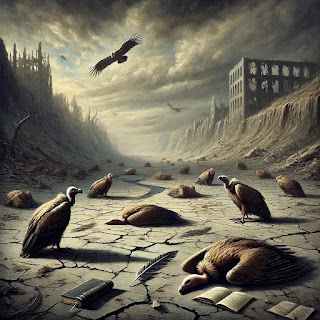The Ministry of Utmost Happiness
This blog is the part of flipped learning activity of the unit The Ministry of Utmost Happiness. In this blog I am going to provide my understading of the assigned video task. This activity is designed to enhance our understanding of the video content and improve our ability to synthesize and summarize information effectively.
Video 1 :
- Mothers of the Disappeared - Kashmiris
- Manipur Nationalists - AFSPA [Armed Forces Special Protection Act]
- This alludes to the real incident of Irom Sharmila fasting and the naked women protesting.
- Delhi Kabadiwala
- Bhopalies - Gas Kand
- People who want Hindi language as the national language
- Mr. Azad Bhartiya
Tilotama's mother Mariayam Ibe shares parellel with the mother of the Roy. another character Khadiza Ahezaz also introduced. Jabeen the second, suddenly founded child was mistry in the narrative. Another important character is of the Amrik Singh, the Inspector and his wife Pinky Singh. Amrik singh throughout his life tortured the people and did atrocity on the people. One of the victim of the Amrik Singh is Musa and that is why he nurtures revenge for him. Another parelle was reveled when the news came that Amrik Singh killed his wife and childeren makes Musa suspecs because he had the fake passport. However, it was he himself who in the guilty conscious did this. This story reveles how the mental truma people had when they as part of their duty tortured other. This reminded me of Frantz Fanon's Wretched of thr Earth where French colonizer had the same truma.
- Hazrat Sarmad Shaheed: This person was originally Jewish but became Muslim to be with the person they loved. They were killed for questioning their beliefs. Even though many people don't know the full story, their shrine represents love that goes beyond differences and celebrates spirituality and love. Roy attempted to mock this character by comparing his action of taking up his head as helmet.
- The Old Man-Baby: This man becomes a symbol of hope when he goes on hunger strike to protest corruption. But his protest, led by wealthy people, becomes more about the excitement of protesting than actually making real change. He also starts to align with Hindu nationalists, showing the conflict between good intentions and real-world problems.
- The Shiraz Cinema: This cinema in Kashmir was first closed by people who saw it as a symbol of outside influence. But then the Indian Army turned it into an interrogation center, showing how cultural and military control are connected. This shows that extreme actions can sometimes lead to even worse problems.
- Jannat Guest House and Funeral Parlor:
This place, built by Anjum in a Muslim cemetery, is a symbol of welcoming people from all backgrounds. It represents an ideal India where everyone is accepted. But it's also near death, reminding us that life is fragile. The name "Jannat" (heaven) suggests a perfect place beyond our world.
- Duniya and Jannat: In the book, "Duniya" (world) and "Jannat" (heaven) are different but sometimes blend together. Places like the Khwabgah offer escape from the real world, but other examples show that paradise and reality can exist together.
- Motherhood: The book shows that motherhood is complex. Characters like Anjum and Tilo face challenges and difficulties. It criticizes the idea of a perfect "Mother India" and shows that motherhood can be different and inclusive.
- Bodies, Refuse, and Internal Organs: In the book, bodies and waste represent resistance against the caste system. People from lower castes often have to deal with waste. Waste can also be a way to protest. The "Sound and Light Show" shows how history is changed to fit political goals. Vultures, who are endangered, symbolize groups that are threatened by social and economic changes.
- Gujarat ka Lalla: This character represents Narendra Modi, a politician who supports Hindu nationalism. His actions foreshadow the growing threat of this ideology.
- The Color Saffron: Saffron is a color associated with Hindu nationalist groups, representing violence and aggression. It reminds us of the violence these groups can cause.
- Vulture:
The book compares the death of vultures to the silencing of artists and thinkers who question the government. When a country focuses too much on power and the military, people who question things are suppressed. This shows the decline of different voices and ideas.
- Guih Kyom, the Dung Beetle: The book ends with hope, symbolized by the dung beetle. It shows that even small, insignificant things can play a vital role in the environment. This teaches us that we need to protect the earth and avoid destroying it.
DoE-MKBU. (2021a, December 28). Part 1 | Khwabgah | The Ministry of Utmost Happiness | Arundhati Roy [Video]. YouTube. https://www.youtube.com/watch?v=-29vE53apGs
DoE-MKBU. (2021b, December 28). Part 2 | Jantar Mantar | The Ministry of Utmost Happiness | Arundhati Roy [Video]. YouTube. https://www.youtube.com/watch?v=gr1z1AEXPBU
DoE-MKBU. (2021c, December 28). Part 3 | Kashmir and Dandakaranyak | The Ministry of Utmost Happiness | Arundhati Roy [Video]. YouTube. https://www.youtube.com/watch?v=cIKH_89rML0
DoE-MKBU. (2021d, December 28). Part 4 | Udaya Jebeen & Dung Beetle | The Ministry of Utmost Happiness | Arundhati Roy [Video]. YouTube. https://www.youtube.com/watch?v=VH5EULOFP4g
DoE-MKBU. (2021e, December 30). Symbols and Motifs | The Ministry of Utmost Happiness | Arundhati Roy [Video]. YouTube. https://www.youtube.com/watch?v=UbBOqLB487U
DoE-MKBU. (2021f, December 30). Thematic Study | The Ministry of Utmost Happiness | Arundhati Roy [Video]. YouTube. https://www.youtube.com/watch?v=5NYSTUTBoSs
Penguin Books South Africa. (2018, August 13). The Ministry of Utmost Happiness by Arundhati Roy [Video]. YouTube. https://www.youtube.com/watch?v=_JAOmFlMlMc



No comments:
Post a Comment